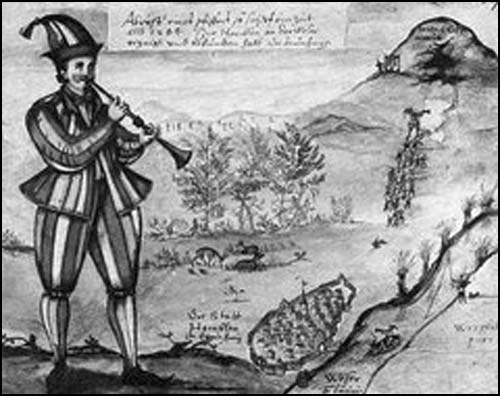
Here I am, totally out of ideas of wat to blog...
When I shud instead be studying.. Clever ain't I?
Lazy lar... Somehow, my mind and body are rejecting incoming educational information.
So here i'm gonna tok bout:
The Pied Piper of Hamelin is a legend, documented by the Brothers Grimm (Der Rattenfänger von Hameln, which translates to "The Ratcatcher of Hamelin"), which tells of an unusual disaster that occurred in the town of Hamelin (Hameln), Germany, 26 June 1284.

In 1284, the town of Hamelin was suffering from a rat infestation. One day, a man claiming to be a rat-catcher approached the villagers with a solution. They promised to pay him for the removal of the rats. The man accepted and thus took a pipe and lured the rats with a song into the Weser river, where all of them drowned.
Despite his success, the people reneged on their promise and refused to pay the rat-catcher. The man left the town angrily, but returned some time later, on June 26th, seeking revenge.
While the inhabitants were in church, he played his pipe again, this time attracting the children of Hamelin. One hundred and thirty boys and girls followed him out of the town, where they were lured into a cave and never seen again. Depending on the version, at most two children remained behind, who informed the villagers what had happened when they came out of the church.
Other versions (but not the traditional ones) claim that the Piper returned the children after the villagers paid several times the original amount of gold.
History
The earliest mention of the story seems to have been on a stained glass window placed in the church of Hamelin c. 1300. The window was described in several accounts between the 14th century and the 17th century but it seems to have been destroyed. Based on the surviving descriptions, a modern reconstruction of the window has been created by Hans Dobbertin. It features the colorful figure of the Pied Piper and several figures of children dressed in white.
This window is generally considered to have been created in memory of a tragic historical event for the city. But although there has been a lot of research, no clear explanation can be given of what historical event is behind the reports, see an external link with a list of theories. However, the rats were first added to the story in the late 16th century; they are absent from all previous accounts. Some traumatic event must have given rise to the tale; Hamelin town records are dated from this time.
Theories that have gained some support can be grouped into the following categories:
• The children fell victim to an accident, either drowning in the river Weser or being buried in a landslide.
• The children contracted some disease during an epidemic and were led out of town to die in order to protect the rest of the city's population from contracting it.
• An early form of Black Death has been suggested.
• Others attribute the dancing of the children to be an early reference to Huntington's disease; however, this is an inherited disorder, and the statistical probability of that many unrelated children having the same genetic condition is very low.
• Another possibility would be the outbreaks of chorea, or communal dancing mania, which are recorded in a number of European towns during the period of general distress which followed the Black Death. The 'Verstegan/Browning' date, 1376, would be consistent with this. These theories perceive the Piper as a symbolic figure of Death. Death is often portrayed dressed in motley, or "pied." Analogous themes which are associated with this theory include the Dance of Death, Totentanz or Danse Macabre, a common medieval type. Various ecstatic outbreaks were associated with the Plague, such as the Flagellants, who wandered from place to place while scourging themselves in penance for sins that presumably brought the plague upon Europe. The rat is the preferred host for the plague vector, the rat flea. When the rats die, the fleas seek humans as a substitute host. Children might be especially vulnerable to the disease.
• The children left the city to be part of a pilgrimage, a military campaign, or even a new Children's crusade but never returned to their parents. These theories see the unnamed Piper as their leader or a recruiting agent.
• The children willingly abandoned their parents and Hamelin in order to become the founders of their own villages during the colonization of Eastern Europe. Several European villages and cities founded around this time have been suggested as the result of their efforts as settlers. This claim is supported by corresponding placenames in both the region around Hamelin and the eastern colonies where names such as Querhameln ("mill village Hamelin") exist. Again the Piper is seen as their leader.
“When, lo, as they reached the mountain's side,
A wondrous portal opened wide,
As if a cavern was suddenly hollowed;
And the Piper advanced and the children followed,
And when all were in to the very last,
The door in the mountain-side shut fast.”





































